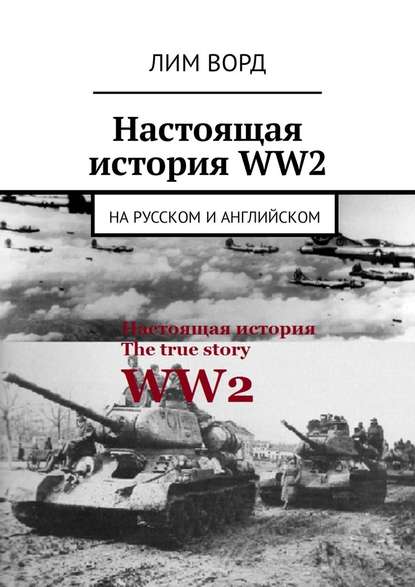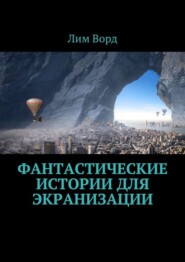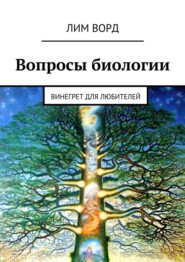По всем вопросам обращайтесь на: info@litportal.ru
(©) 2003-2024.
✖
Настоящая история WW2. На русском и английском
Настройки чтения
Размер шрифта
Высота строк
Поля
Unfortunately, not many songs are composed about this, there are almost no films and books «in the bull’s eye». About exploits and losses speak little, except for, say, speeches, such, it turns out, an intelligent historian on the «Echo of Moscow», accompanied by the giggles of his interlocutors. It corresponds to the spirit of the times «Leningradskaya zastolnaya», verses of the front-line correspondent P. Shubin:
…Let’s drink to those who commanded the companies,
Who was dying in the snow,
Who in Leningrad made his way through the swamps,
Throat breaking enemy
Of the relatively modern songs, you can recall, perhaps, only the works of the folk singer V. Vysotsky. Total war is a mixture of smells, sounds, memories; feelings, which can hardly be expressed in a logical order of words:
Kolos in the color of amber – will we have time?
No, it turns out that we sow
What is the color of amber shone there?
It’s in the field the fire is rushing
Dispersed all of the troubles in the parties
Songbirds are no more – crows
(Storks, Аисты)
It should be noted that the author of this book tries to distance himself from those fans of discussions at historical forums that emanate saliva, evil snickers-spit and bile, when it comes to the losses of the USSR in the first years of the war. For them, everything is initially bad – tanks, planes, people, in the humiliation of heroes or simply confused soldiers, they seem to see the greatness of their own personality. No arguments on them do not work, and you do not want to spend mental energy on those who can not be corrected. This text is intended for those who are able to deeply experience History, possesses the mind and heart, and wants to make a better future by breaking the past into small details.
…Simultaneously, on January 7, 1942, on the northern front, the offensive of Soviet troops begins in the vicinity of the city of Demyansk. On February 8, a cauldron with 6 German divisions, including Tottenkopf, with a total strength of 100,000 people, is being formed. The German Air Force is organizing an air bridge, which delivers up to 265 tons of cargo per day. (Approximately the same number in the air was received by the Second Shock Army in three weeks.) Here, in particular, they shoot down the Yak-1 with the legendary man Alexei Maresiev, the one who will later destroy 7 Luftwaffe aircraft flying with foot prostheses. On May 5, the blockade was lifted. Losses of the parties – the Red Army – 245,000, including 9,000 people who participated in the whole, failed Demian landing operation. Wehrmacht – 55 000 troops.
1
2
3
4
5
1. Map of the encircled Leningrad, 1942. To the south of the village of Mga, near the river Volkhov – the village Myasnoy Bor, near which was surrounded by the 2nd Shock Army.
2. The ruins of Kiev. During the fighting, the city and its main street, Khreshchatyk, suffer relatively little. But, on September 24, starting from the «Children’s World» a series of powerful explosions takes place, leading, in addition to the primary destruction, to a fire that destroys the historical center of Kiev. The fiery storm lasts two weeks. 940 buildings are turning into ruins. There is an opinion that the Germans organized the explosions in order to justify the subsequent total destruction of Jews in Babi Yar, but a documented version – the mining of buildings by special sections of the People’s Commissariat of State Security (NKGB), led by Colonel Alexander Goldovich. The chief of the engineer troops is Andrey Vlasov, the future collaborator, the head of the ROA.
It is not known how many invaders perished from this sabotage, what material damage was inflicted on the Wehrmacht. The meaning of this is when the owners are burned at home, leaving their homes beforehand – as happened in Moscow in 1812. Quite accurately, the action prompted many Ukrainians, who had already been shaken by the Holodomor of 32nd year to cooperate with Hitlerite Germany and the armed confrontation of the USSR.
In the so-called. Babi Yar – a ravine on the outskirts of Kiev, 1.5 km long, 50 meters deep, since autumn 1941. By 1943, the occupiers were shooting 170,000 Soviet POWs, Jews, including women, the elderly and children, who until the last wish to believe in the «census» and «resettlement», OUN members, A. Melnik’s groups who did not agree to cooperate, etc. an experimental soap factory, to make soap from bodies, but the Germans do not have time to put it into use. In 1950, the city (Soviet) authorities decided to fill the ravine with waste from neighboring brick plants. The mixture does not wish to solidify, and, in March 1961, breaking through the earth dam, rushes to the houses. As a result of the Kureniv tragedy (by the name of a neighboring village), one and a half thousand people die.
3. «Thin red line» near Moscow, autumn 1941.
4. Zoya Dmitrievna Kosmodemyanskaya, 1923 – November 29, 1941, a Red Army soldier, a subversive group fighter, Hero of the Soviet Union. Parents – teachers who escaped, or exiled to Siberia, grandfather – a priest, shot by the Cheka. 1940 – treatment in a sanatorium for nervous diseases, acquaintance with (writer) Arkady Gaidar lying there. The Komsomol member has a painful gap between the dream (about the universal brotherhood of people) and the harsh reality surrounding it.
Zoya is to the place of gathering of volunteers at the (Moscow) theater of the Colosseum, sent to a sabotage school. On November 27 in the village of Petrischevo, a group of three people set fire to three peasant houses, killing 20 horses. On November 28, Zoya, having missed his comrades, decides to continue arson, is seen by the master of the house, a certain Sviridov, who summons the Germans. The girl calls herself Tanya. She was driven for 4 hours in the cold, subjected to beatings. To tortures are joined by local residents, whose houses are burnt by partisans. One of them said before execution: «Who did you harm? My house was burned, but nothing was done to the Germans! «The last words Zoe roughly convey the demographic situation in the country «You do not outweigh all, we are 170 million.» Other sources, for better agreement with the second census of the population, distort words to «two hundred million».
The body remains in place of execution for about a month, subject to the outrages of German soldiers. Later it will be buried at the Novodevichy Cemetery.
The whole situation looks rather clumsy, just does not fit into the head, causes controversy to this day, releasing a certain psychic energy. In nonsense, a special meaning is born. Zoya Kosmodemyanskaya did not show herself in a loud military success. But the more true it joins the pantheon of the people’s martyrs (to which, of course, officers can not belong, in full safety, mincing the «Children’s World»). The article in Pravda, January 27, 1942, produces an impact on Soviet citizens, comparable, it seems, with the advent of a battle-worthy tank corps. Kosmodemyanskaya is the same person as very many in the Union, somewhat confused, awkward, realizing that, after the disappearance (built at the expense of humiliation, sweat and blood of millions of people), the mountains of weapons, almost all the personnel of Stalin’s army, have to fight independently, at least somehow, almost from scratch.
5. Crew of the Hero of the Soviet Union Dmitry Fedorovich Lavrinenko, Soviet tank ace (leftmost). On the account of the initiative senior lieutenant of the Red Army (which was, at the same time as the T-34 at the same time, a gunner) 52 German tanks destroyed. The basis of tactics is a combination of actions from ambushes with sudden attacks of a small (3—4 cars) combat group, with well-conducted reconnaissance. These actions come into conflict with the Charter of the Red Army of 1941 – according to which one should always attack the enemy without hesitation, using tanks massively, like some kind of «all-destroying steel avalanche».
Lavrinenko dies on December 18, 1941, after 2.5 months of battles and 28 fights, from a fragment of a mine. Repeatedly presented to the title of Hero, honored him in 1990. The position of the Ministry of Defense of the USSR, and personally, the head of the personnel department, I. Gusakovsky, prevents it: «Dmitry Lavrinenko’s relatives will demand special privileges.»
On May 7, 1942, the Wehrmacht attacks the Soviet troops, concentrated on the Kerch Peninsula (the front line from Kazantip Point to the Black Sea), bombard the previously known targets, never changing their location, and also the ways of retreat. Prior to this, the representative of the Stavka, L.Z. Mehlis completely suppressed the initiative of the commanders, forbidding the construction of defensive structures, even digging trenches, in order «not to bring down the offensive spirit.» Three armies are lined up, side by side, in a limited area of 18 to 6 km, with no reserves in Kerch. Some parts are being evacuated through the Kerch Strait to the Taman Peninsula (140,000), 55,000 people are dying, and 120,000 are taken prisoner. German and Romanian irretrievable losses amount to 10,000 people.
Until the beginning of the eighties, the tractor drivers refused to plow the isthmus of the peninsula between Feodosia and Kerch; The fields are dotted with bones, fragments and ammunition.
The encirclement of the Soviet armies near Kharkov. Barvenkovsky trap. The Third Assault of Sevastopol
May 12, guided by Stalin’s order «to ensure that 1942 was the year of the final defeat of the German fascist troops,» the Red Army is conducting an offensive near Kharkov, with the aim of encircling the «South» grouping, pressing it to the Sea of Azov and destroying it. The blow is inflicted on the three armies of the enemy already prepared for their offensive, including one of the tank armies. The troops advance 20—35 kilometers, then the Wehrmacht tanks cut their weakly protected communications. Escape from the «Barvenkovskaya traps», by May 31 can only a tenth of the encircled troops. Losses of the parties: Red Army 170,000 irretrievably, 120—150 thousand prisoners, 1,240 tanks, Wehrmacht – 7,000 German and 3,000 Romanian soldiers, according to other sources, a total of 18,000 people.
Now the forces of the Axis countries practically do not meet resistance in the vast steppes, they occupy Rostov-on-Don, they reach the approaches to Stalingrad. In the North Caucasus, they manage to approach the city of Grozny (bombed oilfields), capture Krasnodar, Stavropol and Novorossiysk.
June 7 begins the third assault on Sevastopol. Before that, the Luftwaffe bombers liberated from the eastern direction dropped 2,500 tons of bombs of 1,000, 1,800 and 2,500 kg to the city. By June 17, the attackers come to Sapun Mountain: a hill with which it is possible to aim at the whole city and the water area of the Northern bay.
Because of the increased activity of artillery, aviation, German and Italian torpedo boats, the supply of ammunition becomes impossible. The last Sevastopol, in the morning dusk on July 27, leaves the leader of Tashkent, a high-speed destroyer (70 km at full speed), taking 2,500 people from the city, being attacked by 90 Luftwaffe aircraft; loses its course, is towed to Novorossiysk. On July 29 the Wehrmacht forces capture Malakhov Kurgan, set artillery on Sapun Mountain. This is the key point. The next day, the units of the Red Army and the Navy begin to destroy military equipment, supplies and funds. The commander requests permission to evacuate the Stavka, and receives it. The Supreme Commander, 222 people, and 49 wounded are taken to the Caucasus on the 13th, withdrawn from the concrete caponiers Li-2. Another 700 commanders are evacuated by submarines. Further, the command and rank-and-file officers mix on the shore and, in general, lose their status differences. They are taken away by high-speed boats, captains of which come ashore at their discretion, in any place, in the seemingly most suitable moment. So another three or four thousand people are saved.
The remnants of the Maritime Army withdraw to the Cape of Chersonese and (with only 1,000 shells) fight for three days. July 4th all ends. In the German captivity are 75 thousand soldiers of the Red Army.
The forces of the parties on June 6, 1942: the Red Army and the Marine Corps 118,000 men, 100 aircraft, 40 tanks, 450 guns of artillery, 150 coastal artillery guns (100—305 mm), 1,700 mortars. In this case, 305-mm cannons are only in the most effective 30th and 35th batteries, only 4 towers with two guns in each. Wehrmacht and the Romanian Armed Forces: 204 thousand fighters, 1,000 aircraft, 170 tanks (ACS, StuG III), 1,300 guns of various types, 700 mortars. Losses for 8 months of siege: the Soviet Union – 155 thousand killed, including city residents, 75 thousand prisoners, a dozen large surface ships, two submarines, about 70 aircraft (some transferred to the Caucasus). Wehrmacht and Romania: 65,000 irrevocably (three quarters of the losses are ethnic Germans), about 250 aircraft, 230 tanks (including captured from the Red Army) and ACS. The 13-division divisions of the German-Romanian troops who took part in the last assault are given a 6-week rest, they are transferred deep into the rear or to insignificant areas. Returning from vacation Manstein discovers that on the spot, in the Crimea there are only 4 of them. Thus, a swift move, planned by the Field Marshal through the Kerch Strait, to the Caucasus, to the oil fields of Baku, will not take place.
June 27 almost completely destroyed, deprived, by order of W. Churchill escort of warships, convoy «PQ-17»; the supply of food and arms has been stopped. Aviation and submarines sunk 22 ships of 35.
To this day, there is an opinion that, in fact, the ships in the caravan were initially less than the declared number; the incident was only an excuse for canceling supplies to a clear «outsider».
In June 1942, the human resources of the USSR, the large European part of which is in the zone of occupation, and Germany (especially the Axis countries) are equalized. Three of the four main industrial regions are captured. Almost the entire personnel Stalin army – 4 million military, in captivity.
What in such conditions can be at least a tiny, barely noticeable, but correct step to an apparent unthinkable victory?
…In 1931—32, the country was hit by a famine. They are affected by the Holodomor, first of all, Ukraine, the North Caucasus (Kuban), the Volga region. There was no drought. Some put forward such exotic versions as plant diseases – the so-called. rust, and even ergot. The harvest of 1932 was only 40% of the norm – this is a fact. Another version; in central Russia it was historically taken to plow on horses, and in Ukraine, and, generally, in the south, for this purpose, oxen were used. During the collectivization of 1930—31, almost all the personal livestock had to be given to the collective farm. Not wishing that their property was used by some strangers, in many respects hoping for «maybe», peasants pinched and ate their draft power. With horses, it was not customary to do this, both for ethical and nutritional reasons. Some fields in the south of the USSR remained unsown. The tractor purchased in America often had a number of difficult removable flaws. But the central authorities firmly demanded the fulfillment of the plan for grain procurement. Since the beginning of the thirties, grain has been ordered, under pain of severe punishment, to be stored in collective-farm elevators, where it can easily be confiscated for state needs. The volunteers of the new power, the pioneers, looked for someone who hid the «food surpluses», did not they plant potatoes in forest glades, looked around the fields from the towers-suddenly irresponsible persons gather grain spikes?
According to the resolution of the CEC «On the protection of the property of state-owned enterprises… and the strengthening of socialist property» as a «measure of judicial repression for the theft of collective-farm property – execution with confiscation of all property and with replacement under mitigating circumstances with imprisonment for a term not less than 10 years, with confiscation». Amnesty for the «law on the three spikelets» is not provided.
If the tax did not hand over one village, it was recorded in the black list of debtors, and its arrears were shifted to another. The accumulated burden fell on more or less prosperous farms, and simply crushed them with their own weight. Stalin believed that Ukrainian villages «drive the Italian», that is, the Italian strike, when people agree to work only when all formal rules are implemented – which, in reality, is simply impossible. Dzhugashvili fell into a raging anger when he learned, for example, that in the Dnipropetrovsk region collective farms were allowed to leave grain for sowing, even to fill in the insurance fund, demanding to punish the «cheaters of the party» as cruelly as possible. After three years of collectivization, the psyche of the southern peasants broke down, there was persistent indifference to work, threats, promises, and sometimes even their own lives. Collecting arrears government sent usually Jewish commissars, which did not contribute to the popularity of persons of this nationality in rural areas. Ukraine cordoned off from central Russia cordons of the NKVD with machine guns. People trying to escape in the less affected areas of the USSR, for the most part, had to return to their place of permanent residence. Identification of «outsiders» in the cities of the country was facilitated by the system of Soviet passports introduced with December 1932 with a residence permit, actually reviving serfdom.
In Kazakhstan, Stalin’s protege, Isai Isaevich Goloshchekin decided, simply, so, for the convenience of centralized power, to transfer the local population from semi-nomadic to a settled way of life. As a result, the mass mortality of livestock, which is the main source of nutrition, began; One and a half million Kazakhs and exiles died from the «Holoschekin» famine.
In central Russia, 380,000 families were dekulakized, a total of 1.8 million, of whom 90,000 died on the road, 300,000 from malnutrition and disease in places of exile. But, the habit of being a community, a «peace», worked out even under the tsars, helped the general mass of peasants survive even on collective farms.
You can always buy food for gold, currency, valuable property, antiques in Torgsin, (trade-with-foreigners); this system extorted from the population family heirlooms in an amount sufficient for the implementation of the «great construction projects», payment of contracts to American firms (basically, exercising technical control over the construction of industrial enterprises), but it hardly increased the level of sympathy of the population to the existing system.
The harvest of 1933 was good. However, two years later, with the murder of Kirov, which has popular popularity, which in many ways restrains the will of the Secretary, a new wave of repression is rising. The 17th Congress of Winners held in 1934, voted to remove the «leader of the peoples» from office (in particular, for wanting to condemn Bukharin, Rykov and other representatives of the «old guard»), but Dzhugashvili himself managed to count the votes. It is open to accusations against a person who turned the Soviets into a terrible parody of themselves, no one dares, besides, Soviet systemists have their own sins. Of the 1956 delegates 1108 do not survive the next three years, as well as 97 of the 139 elected members and candidates for the Central Committee of the party at the congress. This time Moloch devours the intelligentsia, leaders – civilians and military. In 1937—38, three of the five marshals of the USSR were shot by three, then: of the 5 commanders of the 1st rank – 3, 10 commanders of the 2nd rank – 10, 67 commanding corps – 57, 199 commanders – 125, 397 brigade brigade commanders – 200. In addition, only about 10,500 officers of different ranks, who were ever promoted to the posts by the above-mentioned commanders, were killed and buried, thousands were dismissed or convicted in other articles. The senior officer is the person who says – and people go and do it. To do this, we need increased energy from birth, or cultivated for decades. A commander can not simply be replaced by a graduate of a military school, which, perhaps, knows the theory, but has not yet accumulated a specific internal strength.
…The army, and the whole country, has become a trembling creature, avoiding any manifestation of initiative. In total, directly from hunger and terror, from 1932 to 1941 (in peacetime) killed 8.5 million people. Different scientists give different numbers, and I’m not a historian; the number is the mean between the extreme values, and it most corresponds to my inner sensations.
What in such conditions could induce people to continue (or, rather, all the same, the beginning) struggle?
…Stories of eyewitnesses of the German occupation. Yes, sometimes they are organized by commissars, but, what these people say is true, and not ordinary Soviet propaganda. There is definitely something implausible that is clear: those who go here are even worse, even worse than «their own». They intend to kill everyone.











